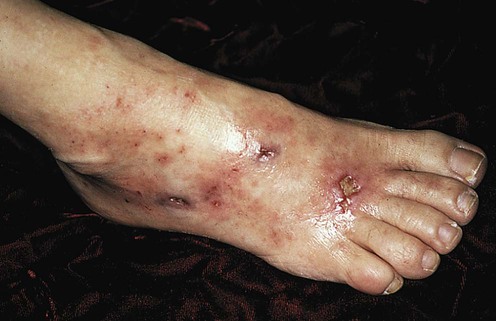Boyvat A, Kundakci N, Babikir MO, Gurgey E. Br J Dermatol 2000; 143: 840–2. Livedoid vasculitis in association with protein C deficiency is described in one patient.
Livedoid vasculopathy

Specific investigations
Livedoid vasculopathy associated with heterozygous protein C deficiency.
![]()
Stay updated, free articles. Join our Telegram channel

Full access? Get Clinical Tree






